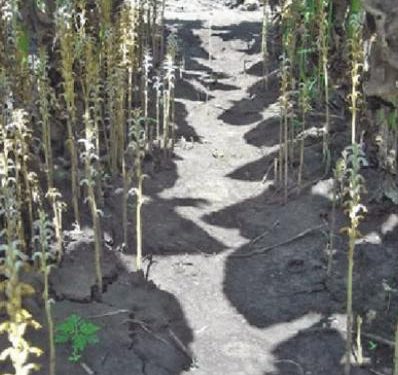Broomrape species (Orobanche and Phelipanche spp., Orobanchaceae) are root parasitic weeds which are particularly harmful to crops, including tobacco, tomato, and sunflower. These weeds drastically reduced the quality and production of crops. Broomrape (Orobanche cumana) is a significant obstruction to sunflower cultivation, mainly in the Middle East, Southeast Europe, and Asia.
The invasion of O. cumana has the potential to reduce the sunflower yield by up to 80 %. The life cycle of O. cumana consists of four stages. In the soil, O. cumana seeds remain in an inactive state until activated by germination cues produced by host plant roots (stage 1). Right after germination, O. cumana initiates contact with host plant roots through haustoria, and root exudates enhance its development. O. cumana releases a number of enzymes (protease, cellulase, and xylanase, etc.) involved in cell wall degradation and establishes a haustorial attachment to ease its penetration into the host roots (stage 2). Upon reaching the vascular bundles of the host plant roots, O. cumana (via haustoria) draws water, essential nutrients and other macromolecules, resulting in host weakening. During Stage 3, a nutrient storage site (tubercle) rapidly develops at the attachment point, a place of underground shoot emergence. The 4th and last stage begins with the above-ground emergence of O. cumana, characterized by the development of flowering spikes and the production of seeds. The basic infestation mechanism is that O. cumana interferes with plant metabolism, restricts the uptake of essential mineral nutrients, impairs the photosynthetic performance, causes extra generation of reactive oxygen species, lipids peroxidation, imposes the ultrastructural cellular damages and synchronizes the antioxidants defence system.
Error




